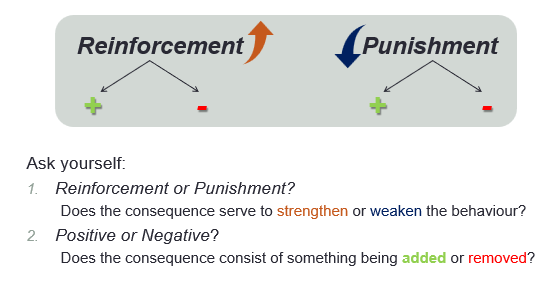Operant conditioning contingencies
Identifying operant conditioning contingencies in general can be tricky and negative reinforcement is a concept that is commonly misunderstood. One reason may be that regular usage of the term ‘negative’ often encourages students to think of this as a qualifier meaning ‘bad’ which they naturally will associate with punishment rather than reinforcement.
Negative reinforcement refers to a learning contingency where something is removed that was aversive, and the act of doing this is experienced as rewarding thus will likely be repeated in future (e.g., if you have a headache and it is removed when taking Acetaminophen, you will likely take this drug again when in pain).
To support students, I try to frame the use of the terms negative/positive in this context as mathematical operations, removing/adding, rather than the qualifiers bad/good. This can be further reinforced by using the mathematical symbols -/+ of slides when presented. I also present the concepts of all contingencies at once to reinforce the meaning of these terms: negative, positive, reinforcement, and punishment.
Tweet
Example for "Operant conditioning contingencies":
https://bank.ecampusontario.ca/wp-content/uploads/2023/06/oc-contingencies.png

